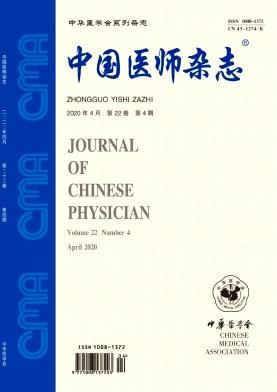Clinical analysis of risk factors and pregancy outcomes of fetal growth restriction in the third trimester
Q4 Medicine
引用次数: 0
Abstract
Objective The aim of this study is to analyze risk factors and perinatal outcomes of fetal growth restriction (FGR) in the third trimester to improve pregnancy outcomes. Methods The retrospective study collected 676 fetus, included 338 FGR and 338 appropriate for gestational infants. All samples were collected between January 1st 2014 and January 1st 2016 from Fujian Provincial Maternity and Children's Hospital. Multivariate logistic regression analysis was used to analyze the risk factors and pregnancy outcomes of fetal growth restriction between FGR and control group. Results ⑴ Multivariate logistic regression analysis showed that the independent risk factor of FGR was severe preeclampsia for 28-33+ 6 weeks FGR. The independent risk factors of 37-40+ 6 weeks FGR were severe preeclampsia, oligohydramnios, velum attachment of cord and cord around neck. ⑵ Compared with the control group of the same gestational week, the fetal distress rate, 1 minute asphyxia rate of newborn and cesarean section rate of FGR in the 28-33+ 6 gestational week group were all higher than those in the same gestational week group (P<0.05). ⑶ The fetal distress in FGR group was more than in cesarean delivery that in vaginal delivery at 28-33+ 6 weeks of gestation, and that in FGR group was more than that in vaginal delivery at 34-36+ 6 weeks of gestation (P<0.05). Conclusions Severe preeclampsia, oligohydramnios, velum attachment of umbilical cord and cord around the neck are the independent risk factors of FGR in the third trimester. During pregnancy, early intervention such as screening in high risk pregnant women and fetal intrauterine monitoring should be carried out to improve the perinatal outcome. Key words: Pregnancy trimester, third; Fetal growth restriction; Risk factors; Pregnancy outcome妊娠晚期胎儿生长受限危险因素及妊娠结局的临床分析
目的分析妊娠晚期胎儿生长受限(FGR)的危险因素及围产儿结局,以改善妊娠结局。方法回顾性研究676例胎儿,其中FGR 338例,适孕儿338例。所有样本于2014年1月1日至2016年1月1日在福建省妇幼医院采集。采用多因素logistic回归分析FGR组与对照组胎儿生长受限的危险因素及妊娠结局。结果⑴多因素logistic回归分析显示FGR的独立危险因素为28 ~ 33+ 6周严重子痫前期。37 ~ 40+ 6周FGR的独立危险因素为重度子痫前期、羊水过少、脐带膜附着及脐带绕颈。⑵与同孕周对照组比较,28 ~ 33+ 6孕周组胎儿窘迫率、新生儿1分钟窒息率、FGR剖宫产率均高于同孕周组(P<0.05)。⑶妊娠28 ~ 33+ 6周FGR组胎儿窘迫发生率高于剖宫产组和阴道分娩组,妊娠34 ~ 36+ 6周FGR组胎儿窘迫发生率高于阴道分娩组(P<0.05)。结论重度子痫前期、羊水过少、脐带膜附着、脐带绕颈是妊娠晚期发生FGR的独立危险因素。妊娠期应进行早期干预,如高危孕妇筛查、胎儿宫内监测等,以改善围产儿结局。关键词:妊娠三个月;胎儿生长限制;风险因素;怀孕的结果
本文章由计算机程序翻译,如有差异,请以英文原文为准。
求助全文
约1分钟内获得全文
求助全文

 求助内容:
求助内容: 应助结果提醒方式:
应助结果提醒方式:


